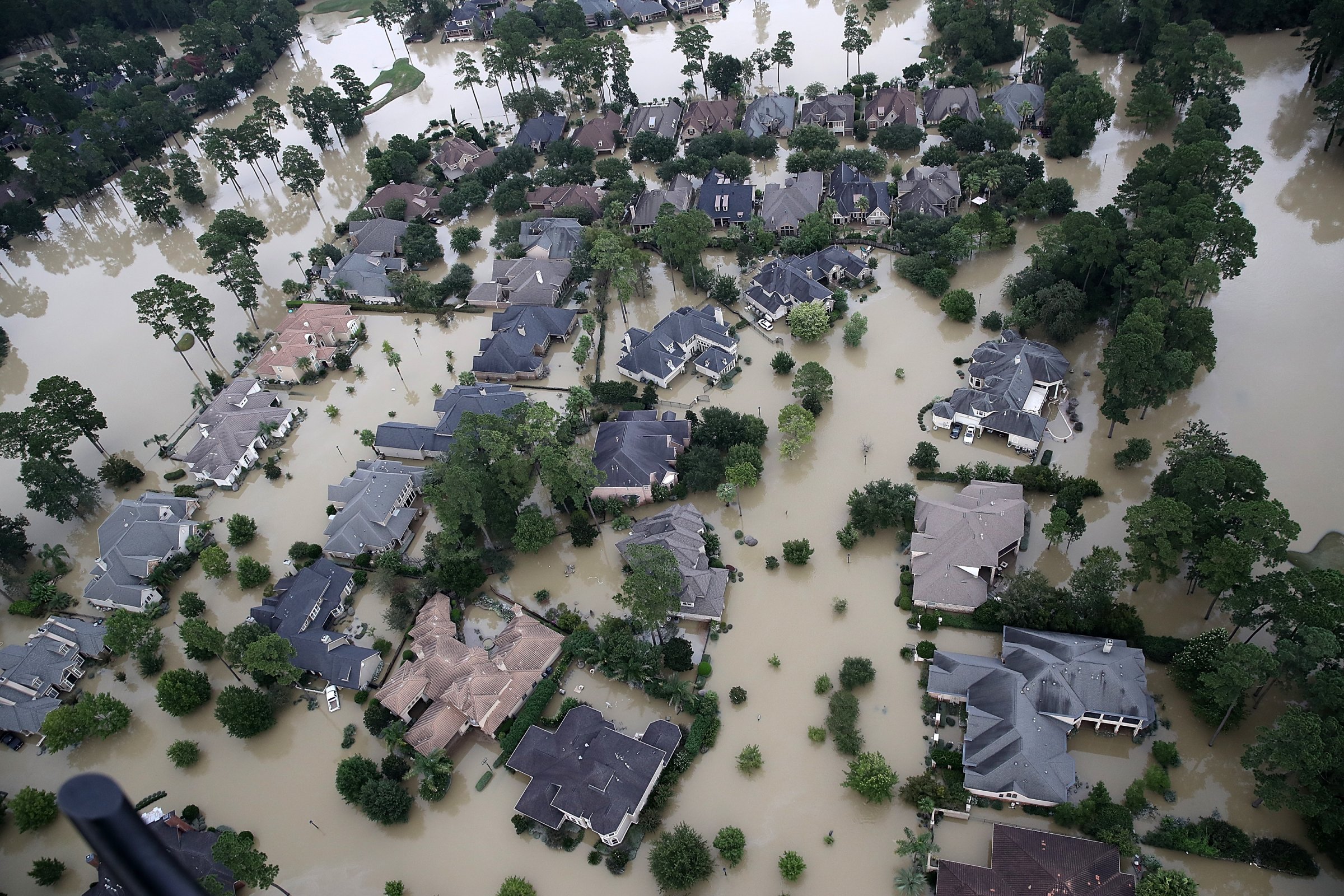
From the air, in the photographs, the water looks like it covers everything equally; brown and muddy, it seems to have replaced Houston’s streets and highways. From the streets, the water often runs into homes in America’s fourth-largest city, soaking the objects and possessions from which we make meaning of our lives. It flows into factories and refineries and chemical plants, spreading their smells and their poisons. It kills — at least 38 people already.
Water has no mind. Wind cannot think. Hurricanes have no intent. Liquid, pulled by gravity, flows to the lowest point. Yet it also flows into the cleavages created by our society, seeping into our social cracks.
“Nature isn’t racist. Nature doesn’t target the poor,” my fellow disaster historian Andy Horowitz of Tulane University tweeted after Hurricane Harvey first struck. “So if you see disparate impacts with Harvey, ask what human choices caused them.”
What Horowitz describes is one of the key tenets of the half-century-old field of disaster studies. A natural hazard — the hurricane, earthquake, tornado or mudslide — is not a disaster on its own. If a hurricane blows over a deserted island, or if an earthquake rocks an unpopulated mountain, it is not a disaster. What makes the hazard a disaster is when it comes into contact with people and our societies. Disasters are social events, shaped and experienced through the features and distinctions we have built through our human choices. As a result, even though the wind and rain draw no distinctions of race, class or immigration status, the disasters they create often replicate and deepen social inequalities.
Disasters make these distinctions on levels both big and small. Rich people are more likely to have rich friends and relatives, and so if they must leave their homes and cannot stay at a hotel, they can often stay in comfortable guest rooms; the poor are more likely to camp out on a couch or a floor. People with flexible, salaried jobs and those with generous leave policies, are likely to have their pay be uninterrupted; hourly workers must wade to work or miss their shifts. Jobs that, without vacation pay, sick leave or stable hours, leave workers in or near poverty in good times become even worse in disaster.
In the United States, where class and race so often determine political might, dirty and unsafe industries are usually located in poor neighborhoods and neighborhoods of color. This is bad enough in ordinary times, but when floodwaters release dangerous pollution, as they have already started to in Texas, the situation worsens.
In many cities, thanks to housing prices and flood insurance policies, it is usually the poor who live in the most flood-prone neighborhoods. This is less true in Houston, where even some affluent neighborhoods are in flood zones. But even in these neighborhoods, the water has deepened class divisions. In the middle-class neighborhood of Meyerland, for instance, the Houston Chronicle’s Lydia DePillis reported growing distinctions between older residents whose one-story ranch houses have flooded and relative newcomers, who were able to afford to raise their houses on stilts to avoid flooding.
The public sector, hollowed out by 36 years of ideologically driven attacks and cuts, no longer has the wherewithal to respond or prevent disaster. We have underinvested in critical infrastructure for a generation or more. Public hospitals, social workers, housing and welfare have all faced cut after cut. All that is left are the police and the army, and so it is with their military and paramilitary logics that we respond to disaster. For communities used to negative interactions with law enforcement — for African Americans whom police shoot disproportionately, for immigrants whose families have been ripped apart by ICE raids and deportations — there is little reason to trust the cops when they now come claiming to help.
Despite these divisions of class and race, there is reason to hope. Disasters replicate social inequality, but they also inspire altruism and solidarity. Faced with overwhelming need, Houstonians are already responding. Private citizens rescue their neighbors. Friends share space or a meal. Strangers volunteer. Disasters help bring us together and experiment with new ways of being citizens. After Katrina, the Common Ground Collective was a model of mutual aid, providing self-defense, medical care and help rebuilding homes; after Sandy, Occupy Sandy won plaudits even from the Department of Homeland Security for its solidarity and relief. These experiments show how we can, with hard work, build back storm-ravaged cities to be more equal, more just and with fewer cleavages into which the next flood can seep.
More Must-Reads from TIME
- Cybersecurity Experts Are Sounding the Alarm on DOGE
- Meet the 2025 Women of the Year
- The Harsh Truth About Disability Inclusion
- Why Do More Young Adults Have Cancer?
- Colman Domingo Leads With Radical Love
- How to Get Better at Doing Things Alone
- Michelle Zauner Stares Down the Darkness
Contact us at letters@time.com